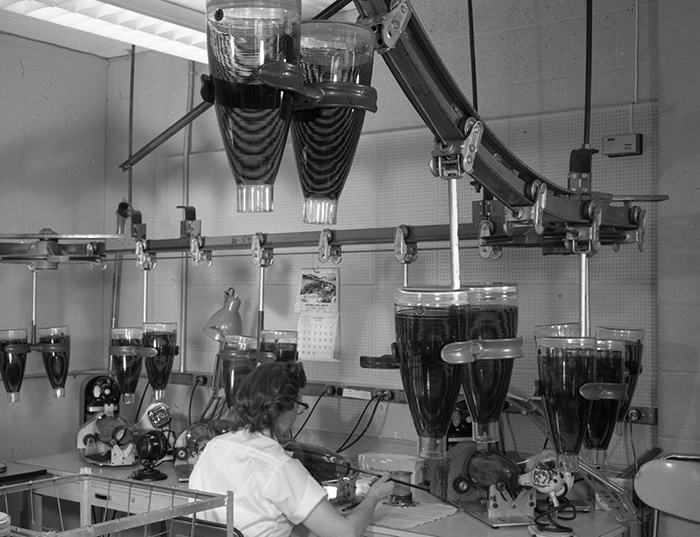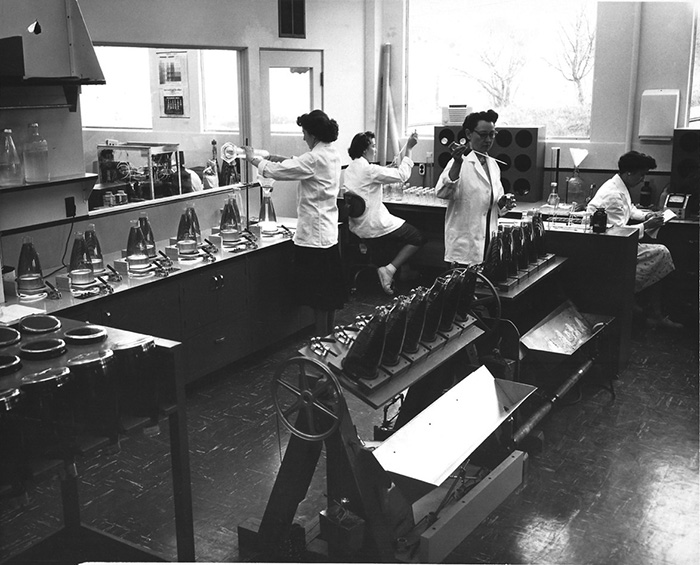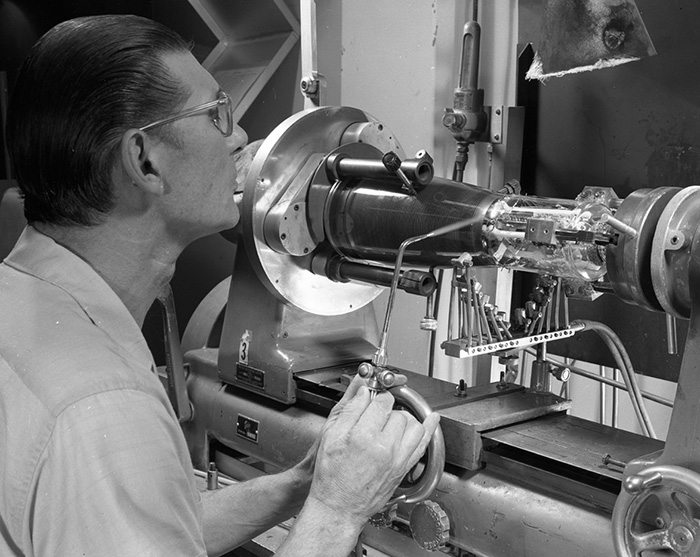CRT Donations to the Ohio Glass Museum
Cathode-Ray Tubes (CRTs) were used in oscilloscopes from the 1930’s by engineers and scientists to visualize electronic waveforms. The development of television, computers, cell phones and much in the way of modern electronics would not have been possible without the use of oscilloscopes and similar instruments. Tektronix was the leading manufacturer of oscilloscopes for most the second half of the twentieth century. As with television receivers, around the year 2000 flat panels such as Liquid Crystal Displays replaced CRTs for use in oscilloscopes.
The CRTs developed at Tektronix were characterized by their Narrow Angle Electron Gun which provided a focused electron beam that was electrostatically deflected by pairs of vertical and horizontal “deflection plates” to provide a small spot on a phosphor screen for visual or photographic viewing.
Lancaster Glass was the primary supplier of bulbs used in Tektronix glass CRTs. The following photo shows a resistive film being applied to the inside of glass bulb and dried afterwards. This resistive helix provided a uniform electrical field from a low voltage electron gun to a high voltage (10-14kV) applied to the phosphor screen.
After the helix winding process, phosphor particles were settled on the inside of the faceplate, dried and coated with a thin aluminum film acting as a mirror and providing electrical contact. In the following 1954 photo, phosphor is being settled in the vertically-oriented bulbs and the water solution plus excess phosphor is slowly poured off as the second table tilts over a catch basin.
The finished electron gun is flame sealed to the bulb where the connections to the vertical and horizontal deflection plates (“neck pins”) are made. In this photo, a CRT with two independent electron guns allows comparison of unrelated signals is being flame sealed. The bulbs supplied by Lancaster Glass terminated at the flame seal junction shown here.
The vintageTEK museum recently donated 3 CRTs to the Ohio Glass museum, in Lancaster, OH. The three CRTs we chose were from the 547, 647, and 454 oscilloscopes which all used bulbs from Lancaster Glass. We also supplied the write-up from this page as background material.
We supplied the following text for their exhibit placards.
The 547 oscilloscope was the "workhorse" product for Tektronix from 1964 to 1975. The round glass bulb with a flat faceplate was purchased from Lancaster Glass, which was typical of the CRTs designed in the late 50's and during the 1960s. The included metal button provided a high voltage (Typically 10kV) connection to the phosphor screen.
The 647 instrument was a small solid-state instrument sold by Tektronix from 1963 to 1967. This rectangular glass bulb required a new development by Lancaster Glass, due to the wide aspect ratio and almost flat sides. The included metal button provided a vacuum-tight connection to the 14kV phosphor screen.
Solid-state circuits allowed small, portable oscilloscopes to have high performance and the 454 oscilloscope was a popular instrument. An evolution from the 647, new CRT designs allowed significant performance gains while reducing the physical size compared to the 547 and 647 CRTs. The continued evolution to smaller portable instruments drove Tektronix to manufacture ceramic bulbs with very flat sides, which ended the demand for glass bulbs.




